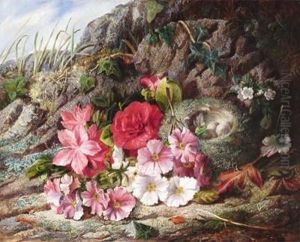Alfred Lucas Paintings
Alfred Lucas was not a traditional artist in the sense of a painter or sculptor, but he was a significant figure in the field of art conservation and chemistry, particularly known for his work in Egypt. Born in 1867 in England, Lucas initially trained in chemistry and eventually became an analytical chemist. His expertise led him to Egypt at the beginning of the 20th century, where he found a unique niche applying scientific principles to the conservation of ancient artifacts.
Lucas's most notable work was associated with the discovery of Tutankhamun's tomb in 1922 by Howard Carter. He was called upon to help preserve the tomb's artifacts, including the famous death mask of the young pharaoh. Lucas's meticulous approach to conservation and his innovative techniques were crucial in preserving these priceless historical treasures. He documented his methods and findings in his seminal work, 'Ancient Egyptian Materials and Industries,' which remains a key reference for Egyptologists and conservators.
During his tenure in Egypt, Lucas worked for the Egyptian government's Service des Antiquités, where he applied his chemical expertise to the analysis and conservation of a vast array of Egyptian artifacts. His contributions to the field were significant, as he developed new methods for the restoration and preservation of objects that were often thousands of years old.
Alfred Lucas's impact on the field of art conservation was profound. His work helped to establish the importance of scientific analysis in the preservation of cultural heritage. He passed away in 1945, leaving behind a legacy of innovation in the interdisciplinary field of art and science, with a particular focus on the materials and methods of ancient Egyptian craftsmanship.


